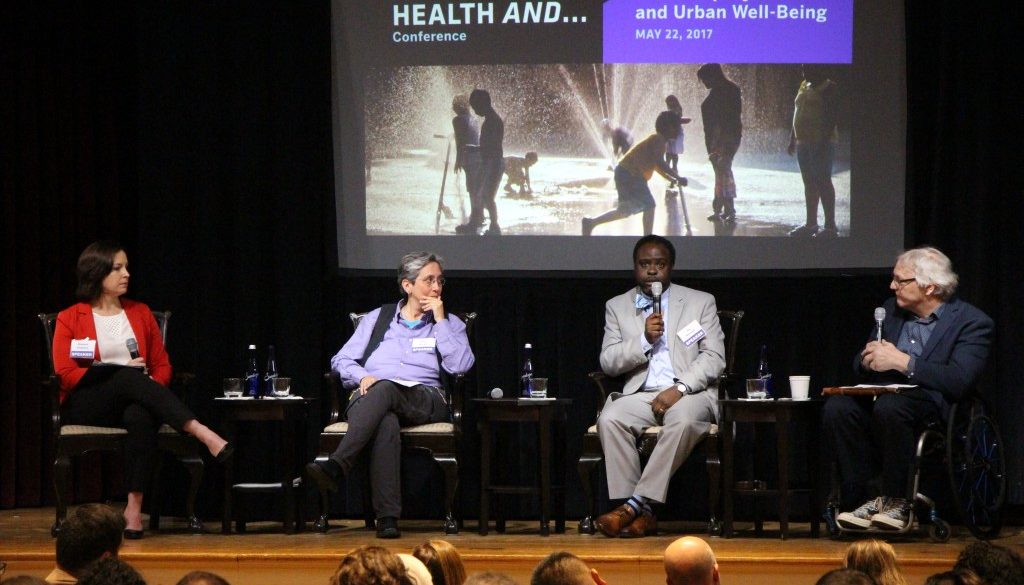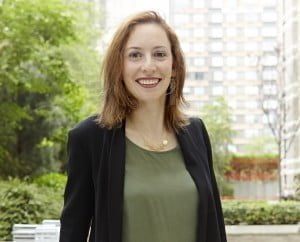Moving from Research to Action: A Report on the Health And…Racial Equity & Urban Well-Being Conference
Elaine MeyerHow can population health researchers go beyond describing the causes of disease to take action, and where should these researchers’ place in the action be—especially for an issue as important and as historically rooted as the unequal health outcomes for people from different racial groups?
Speakers at the Health And…Racial Equity & Urban Well-Being conference, hosted on May 22, 2017, by the Department of Population Health at NYU Langone Health, provided approaches for tackling this challenge in a variety of domains. As Marc Gourevitch, MD, MPH, chair of the department said, the goal of the conference was “not so much to explore whether there are connections between racism and health or neighborhood and health, but rather to think about strategies to foster and accelerate change.”
Race equity lens
New York City’s Health Commissioner, Mary T. Bassett, MD, MPH, noted that the Department of Health & Mental Hygiene is focused more than ever on reducing the impact of structural racism on health. Using “a race equity lens,” the department has identified gaps “that we might not have uncovered if we just looked at the aggregate numbers,” said Commissioner Bassett. Using this lens has meant reaching at-risk populations that initially were not getting Zika virus screening, and ensuring that health department staff are responding equally to neighborhoods across New York City in the event of an emergency. In neighborhoods that were historically segregated due to government policies like redlining, the Department of Health has opened “neighborhood health action centers.” These centers have turned underutilized office space into hubs hosting primary care and mental health services, community organizations, and health and other city agencies, all under one roof.

Law enforcement encounters: data and fresh approaches
Joseph Ravenell, MD, MPH, associate professor of population health at NYU School of Medicine, and Joseph Ladapo, MD, PhD made recommendations to fellow physicians about counseling black patients on staying safe during law enforcement encounters. Personally moved by the recent police shootings of black men and women, both men decided to take action. They first published their suggestions in a 2016 New York Daily News op-ed “Doctors’ Duty to Black Men.“
Using epidemiologic and data sleuthing expertise, Nancy Krieger, PhD, professor of epidemiology, and Justin Feldman, MPH,MSW, a doctoral candidate, both of Harvard T.H. Chan School of Public Health, have documented law enforcement-related deaths in order to shine a light on data that is not centralized and often unreported. “If we do not have data made accessible,” said Dr. Krieger, “problems fester and get worse.” The goal, she added, is to “count for accountability.”
The organization Cure Violence has shown that law enforcement is not the only approach useful in defusing violence. The organization’s employees, who often have ties to the communities in which they work, try to prevent shootings and other violent events before they happen. Cure Violence’s model involves detecting and interrupting potentially violent conflicts, reaching out to people at the highest risk, and changing community norms regarding violence. Since Cure Violence began its work in neighborhoods in the Bronx in New York City, they have seen extended periods without shootings or homicides, said Shannon Cosgrove, MHA, director of health policy for the organization.
Think practically
The former director of the Centers for Disease Control & Prevention, Tom Frieden, MD, MPH, encouraged the audience to think practically about what they can do to reduce health inequity. When he was heading tuberculosis control in New York City, some voices suggested that the disease couldn’t be controlled until all of the myriad social ills that caused it were addressed. But realizing that he had to act even in the short term, Dr. Frieden focused first and foremost on treating tuberculosis patients in the hospital until they no longer had the disease. “Addressing broader social context is crucially important,” said Dr. Frieden, but health professionals must think not just about what “should” be done but “what can be done and figure out how to do it.”
Taken together, the presentations by these academics, health care and public health providers, and community action organizations illustrate the multilevel approaches necessary to address persistent racial disparities in health.
For more on the 2017 conference, including more about the speakers, additional resources, slides, and video, you can visit the Health And… conference web page.





All comments will be reviewed and posted if substantive and of general interest to IAPHS readers.